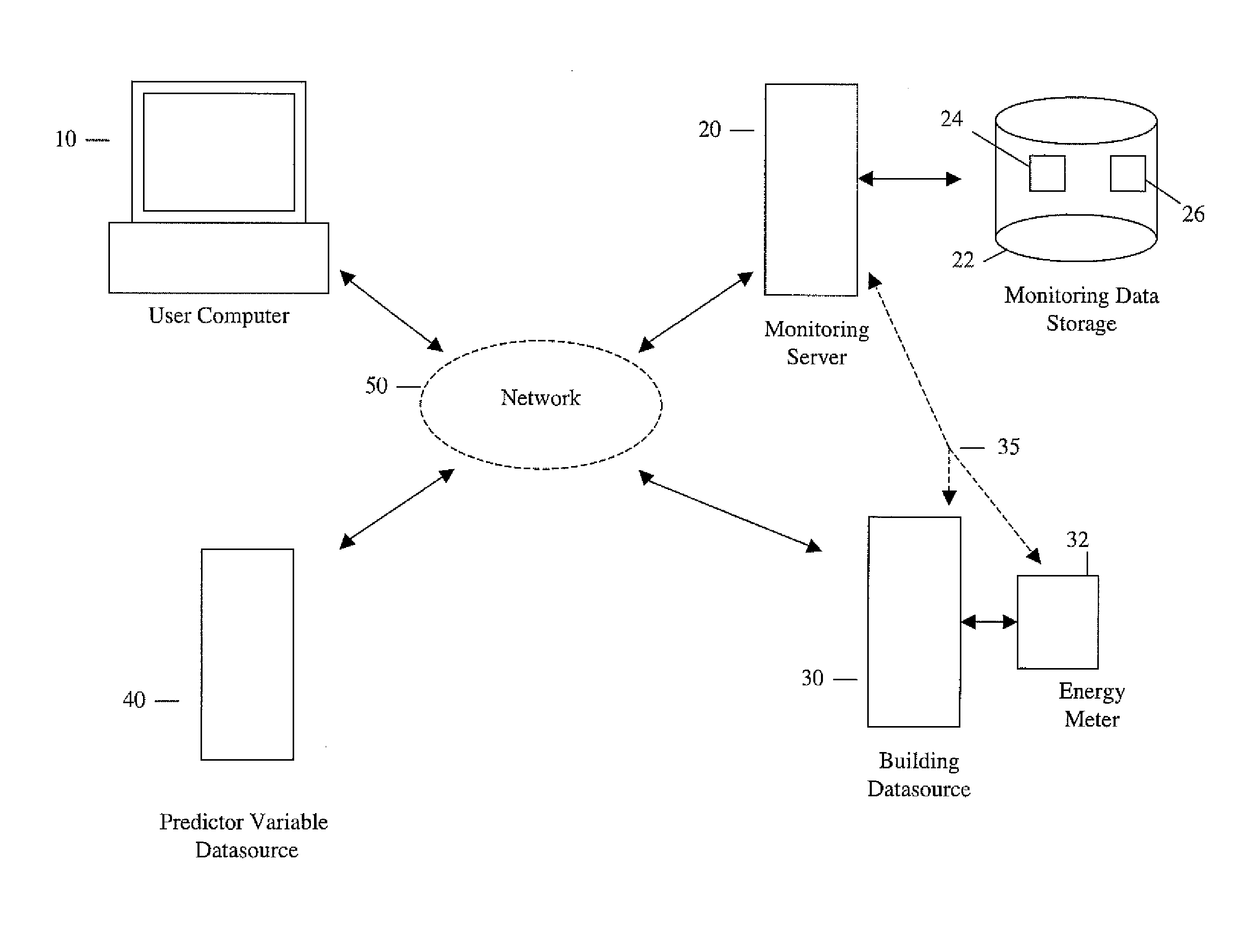Systems and methods for predictive building energy monitoring
- Summary
- Abstract
- Description
- Claims
- Application Information
AI Technical Summary
Benefits of technology
Problems solved by technology
Method used
Image
Examples
Embodiment Construction
[0024]FIG. 1 illustrates an exemplary networked operating environment in which an embodiment of the present invention may be implemented. The networked environment includes a user computer 10 connected to a communication network 50, which may include one or more of: a local area network, intranet, wide area network, world wide web (WWW), or the global Internet, for example, such that user computer 10 may communicate with other computers similarly connected to network 50. Other computers connected to network 50 may include a building monitoring server 20, building datasource server 30 connected to building energy meter 32, and a predictor variable datasource server 40, which may each communicate with any other computer connected to the network 50. Optionally, building datasource server 30 may connect directly to building monitoring server 20, such as by connection 35, for example. Additionally, in a further optional embodiment, building energy meter 32 may connect directly to buildin...
PUM
 Login to View More
Login to View More Abstract
Description
Claims
Application Information
 Login to View More
Login to View More - R&D
- Intellectual Property
- Life Sciences
- Materials
- Tech Scout
- Unparalleled Data Quality
- Higher Quality Content
- 60% Fewer Hallucinations
Browse by: Latest US Patents, China's latest patents, Technical Efficacy Thesaurus, Application Domain, Technology Topic, Popular Technical Reports.
© 2025 PatSnap. All rights reserved.Legal|Privacy policy|Modern Slavery Act Transparency Statement|Sitemap|About US| Contact US: help@patsnap.com



